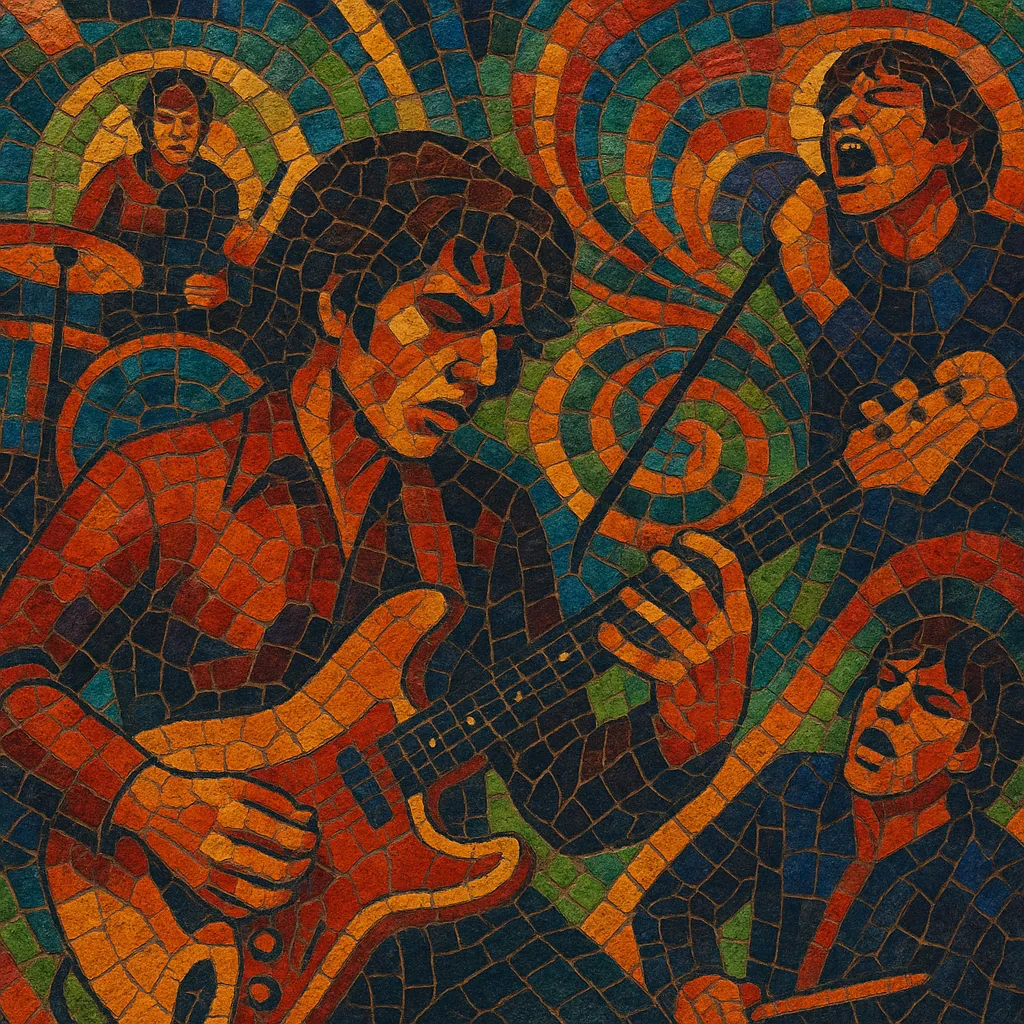Freakbeat is a hard-edged strain of mid-1960s British beat and R&B that pushes toward proto-psychedelia and early hard rock. It is characterized by aggressive, fuzz-drenched guitars, feedback stabs, rapid-fire drum breaks, and punchy, hook-driven choruses.
Typically recorded as high-energy singles for the mod scene, freakbeat songs are concise (often two to three minutes), loud, and rhythm-forward, with blues-based riffs, shouted or urgent vocals, and dramatic dynamic stops and starts. The sound bridges early British R&B/beat groups and the heavier, more experimental rock that followed, embodying a raw, kinetic intensity ideal for dancefloors and club stages.
Freakbeat emerged in the United Kingdom around 1965 out of the mod club circuit and the British beat boom. Bands steeped in rhythm and blues and the British Invasion sound began cranking up volume, adding fuzz pedals, tighter rhythmic hits, and more aggressive arrangements. This intensified beat/R&B hybrid—still very single-centric—formed a stylistic bridge between early beat groups and the coming wave of psychedelic and hard rock.
At its height, freakbeat was defined by riff-based songs, brash lead guitar (often employing Tone Bender- and Fuzz Face-style fuzz), and explosive drum fills designed to energize crowded dancefloors. The scene was largely underground and fast-moving, with many bands releasing only a handful of singles. Its aesthetic—feedback squalls, call-and-response vocals, and bluesy pentatonic leads—anticipated heavier late-60s directions while retaining beat music’s hookcraft and brevity.
The term “freakbeat” was applied retrospectively, popularized by collectors and reissue culture in the 1980s to categorize intense, mod-adjacent British 60s singles that didn’t neatly fit under garage rock or psychedelic rock. Influential compilations (e.g., the Rubble series, Chocolate Soup for Diabetics, and later Nuggets II) helped codify the style and elevate lesser-known bands alongside more famous contemporaries.
Though short-lived, freakbeat’s attack and urgency fed directly into psychedelic rock, early hard rock, and ultimately proto‑punk and punk. Its spirit resurged in later garage and psych revivals, inspiring bands to fuse tight pop hooks with overdriven, percussive ferocity.


